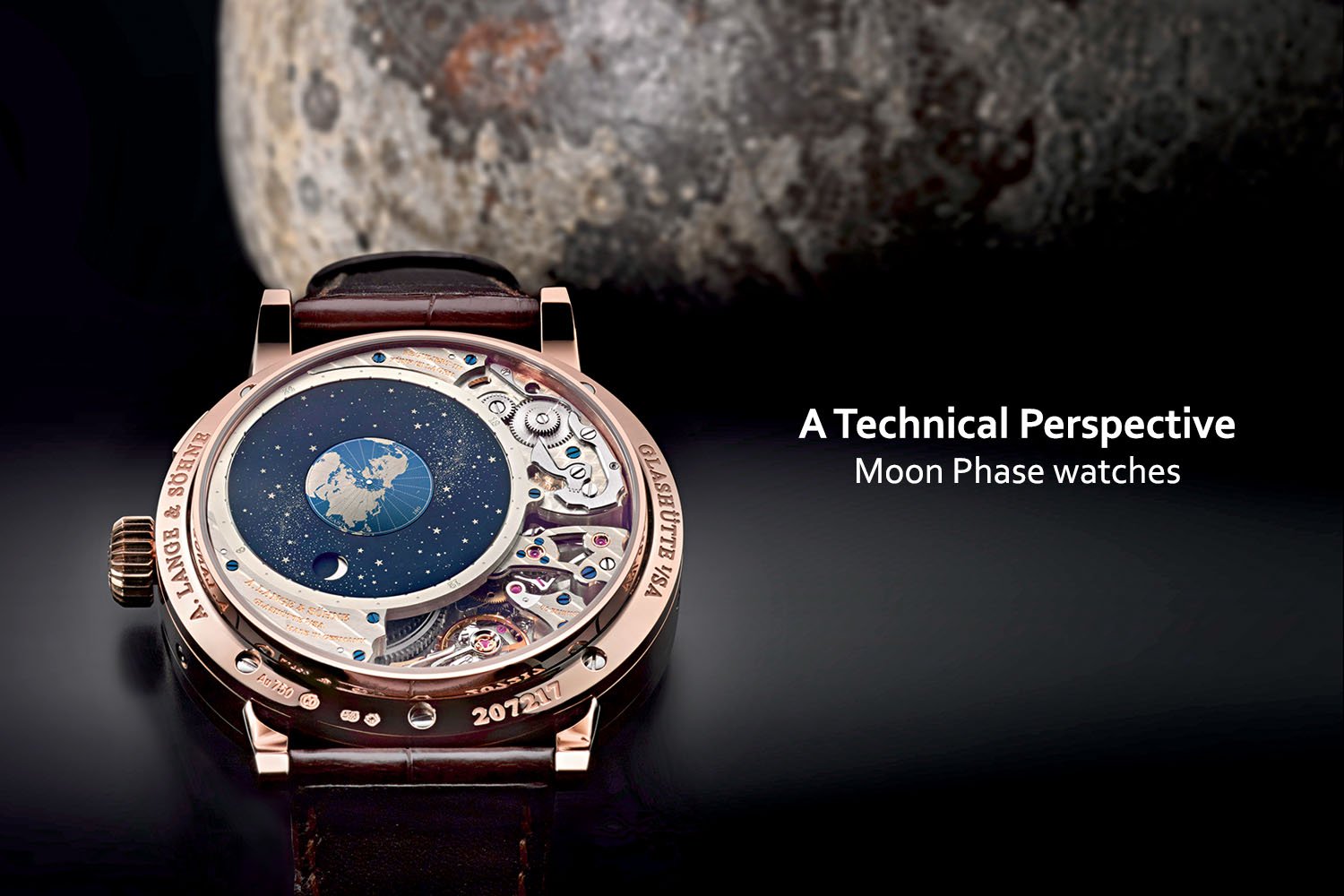All You Need to Know about Moon Phase Watches

“Do not swear by the moon, for she changes constantly. Then your love would also change” William Shakespeare, Romeo and Juliet – The attraction the moon exerts on our imagination is almost as powerful as its pull on the tides. Beyond the evocation of the utilitarian ties between horology and astronomy, the reproduction of lunar cycles on the dial of watches is poetic and symbolic. Moon phase watches are a statement of style through a subtle and anachronistic connection to our past and our place in the universe. Underneath the dials, sophisticated mechanisms gear the moon cycles.
There are different types of lunar months. What matters for watchmakers is the synodic month, the cycle of visible moon phases – the moon as visible in the sky. Its average length is of 29.530587981 days (29 d 12 h 44 min 2.80 s). In their attempts to reproduce the progression of our satellite, most moon phase watches usually feature a wheel with 59 teeth (2 x 29.5 days). It advances one tooth per a day, while two moon faces traditionally appear, one after the other, in a window.
The unapologetically elegant Jaeger-LeCoultre Master Ultra Thin Moon 39, with a traditional moon phase display in a window at 6.
The exact duration of a lunation being of 29.530587981 days, such mechanisms need to be corrected by one day every two and a half year. The closer the moon phase calculation come to the average lunation, the more precise it will be. With more sophisticated mechanisms, the gear ratio can increase precision to one day over a period of more than a century, a millennium (or even more).
 Lange & Söhne – the intricacies and stunning finishes of the Richard Lang Terraluna L096.1 movement. Its moon phase indicator needs to be adjusted by one day only each 1.058 years. The moon also completes an orbit around a disc depicting the earth and rotating once per day.
Lange & Söhne – the intricacies and stunning finishes of the Richard Lang Terraluna L096.1 movement. Its moon phase indicator needs to be adjusted by one day only each 1.058 years. The moon also completes an orbit around a disc depicting the earth and rotating once per day.
Talking about precision, several watchmakers tried to enhance the precision of the moon-phase indication. For instance, Christiaan Van Der Klaauw, with its Real Moon, had a 3D moon indicator that deviates only one day in 11.000 years. It is also the most accurate 3D moon phase in the world ever incorporated in a mechanical watch.
Then, independent and quite unique brand Ochs und Junior built a moon phase watch that was precise for the coming 3478.27 years. Certainly not the most precise ever, but do consider that the moon phase function is executed with a 5-part epicyclical gear system (only 5 parts…).
The Sauterelle à Lune Perpétuelle 2M presented by independent watchmaker Andreas Strehler in 2015 is, to date, the most precise moon phase wristwatch – requiring a correction of one day for approximately 2.060 million years. Based on calculations made by Professor Robert Baggenstos, Andreas Strehler designed a completely new gear train for the 2M. Professor Baggenstos has calculated the ratio and Andreas Strehler has turned these calculations into a gear train.
However, Andreas Strehler just released a new watch, The Lune Exacte, which isn’t said to be mechanically more precise but that is more precise in the way to be adjusted. As precise as watches may be, they cannot be read very precisely. Except at new moon and at full moon, the wearer of the watch has to guess what the exact phase or age of the moon is. Here, the Lune Exacte features a scale on the dial that allows to set the moon the closest 3 hours, with a Vernier Scale.
Northern and southern hemisphere
People in the different hemisphere see the moon in a different way. The sunlit side of the moon is seen ‘upside down’ in the southern hemisphere. For instance, the first quarter is a growing D-shaped moon in the northern hemisphere while it is a C-shaped moon in the southern hemisphere. Only the full moon and the new moon look the same on both sides of the equator.
Most watches display the moon as seen in the northern hemisphere. Yet some watchmakers have presented watches with southern hemisphere representations or double moon phases, displaying simultaneously the moon phase as seen from both hemispheres – like IWC in some of their perpetual calendars or recently Arnold and Son with the HM Double Hemisphere Perpetual Moon.










3 responses
Lange Excellence Award Competition was about moon phases few years ago and my winning project had couple unusual features in it, like ‘earth phase’. If interested see: https://www.facebook.com/lainewatches/photos/a.1550928331864968.1073741827.1550909645200170/1553839521573849/?type=3
Easily understood and very informative, excellent article.
Thanks for reading and for your comments.
Congratulations for the award and the creativity of your development!
Xavier.